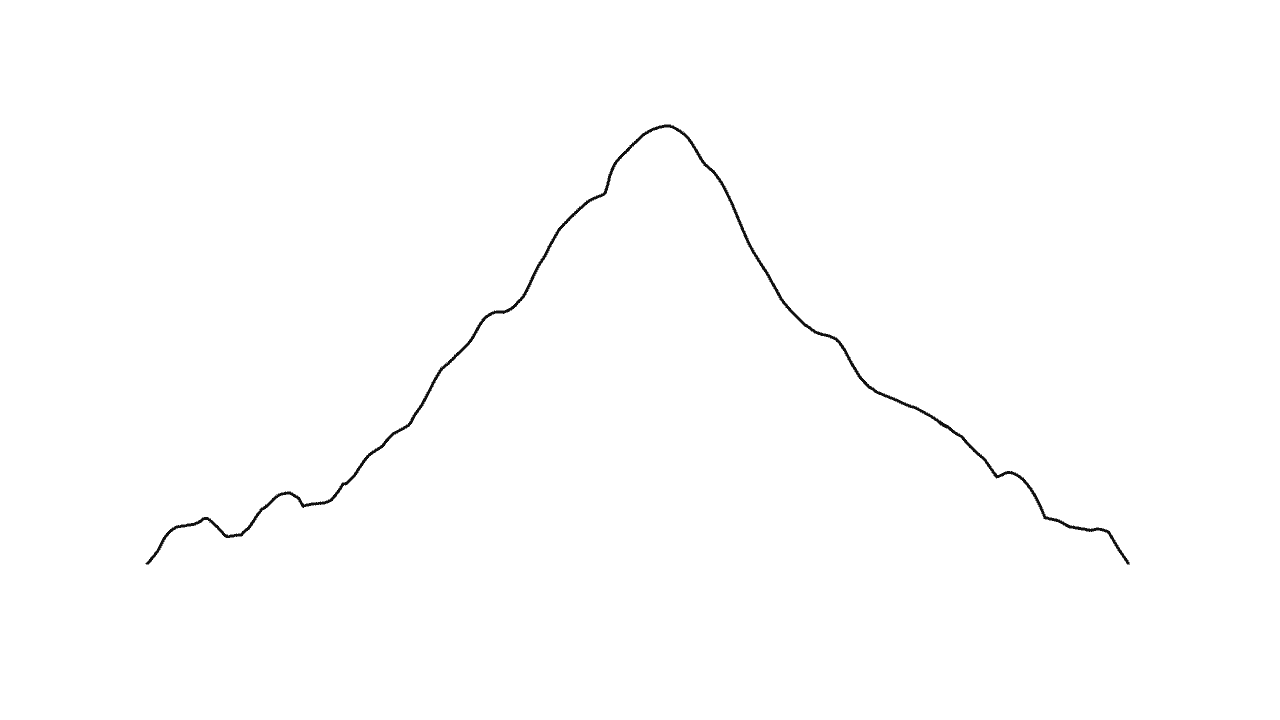About the Artwork
A set of sandpails in the form of world mountains, to scale, one inside the other
First There is a Mountain was a participatory artwork by Katie Paterson which toured the British Isles’ diverse coastline from 31 March to 27 October 2019. Consisting of a unique public edition of ‘buckets and spades’ in the form of world mountains, the artwork toured twenty-five high profile coastal art venues around the UK on a weekly/bi-weekly basis. Taking place each Sunday over the thirty-two week period of British Summer Time, each venue staged a unique sand pail building event on their local sandy beach, inviting the public to transform their beach into mountains of sand. The artwork formed a time-based topographical map connecting the Earth’s oldest rocks with the UK’s geological landscape, celebrating the local, national and international.

“In every outthrust headland, in every curving beach, in every grain of sand there is the story of the earth” Rachel Carson
Each sand pail is a scale model of five of Earth’s mountains: Mount Kilimanjaro (Africa), Mount Shasta (N. America), Mount Fuji (Asia), Stromboli (Europe), and Uluru (Oceania), nested together in a set. Each mountain was carefully selected via exacting research and used data from NASA’s Shuttle Radar Topography Mission and the National Geospatial Intelligence Agency. The sand pails were thermoformed out of fully compostable bio-plastic derived from corn starch. At the end of the tour the sand pails were composted, and through this process have disappeared completely.
Participants came together to play out the world’s natural geography, sculpting beaches into hundreds of mountains of sand forming micro-geologies orchestrated against a backdrop of tidal times. After each event the mountains of sand submerged into the sea. The artwork’s inevitable ephemerality points to concepts around gravitational attraction and awareness of Earth’s titled axis during longer daylight hours, and the UK’s eroding coastline.
Twenty-five new pieces of writing were commissioned to accompany First There is a Mountain, corresponding to each beach location. The works form a digital anthology, bringing together celebrated authors, poets, geologists, earth scientists, ecologists, technologists, and art writers. Each text creatively responds to the artwork and was read aloud at the start of the event. The texts collated into an anthology are now available to read here. The diverse writings connect with each locality, relating the artwork to the place, its people, history and wider geological context.
Katie Paterson’s art enables us to engage with forces that are too intangible and too immense for us to experience in other ways. Time, glaciation, growth, the solar system, fossilisation, electricity and weather systems provide inspiration for Paterson's works, and sand is a recurrent material that acts as a cypher for time and infinitude in her practice. First There is a Mountain is the next step in Paterson's enquiry into a recalibration of our understanding of space, time and place.
This artwork became an invitation for the public to slow down, pause and side step reality to create something that was both real and unreal at the same time. A world of iconic miniature mountains that prompted participants to reflect on the space we occupy: putting immensity into miniature to consider the interconnectedness of our planet. The eventual disintegration and imprints of mountains enveloped by sandy beaches reminded us that our time on Earth is limited against the forces of nature; the extraordinary existing in ordinary things around us, everywhere.
First There is a Mountain connects diverse world mountains to the smallest grains of sand. It relates to deep time, to the idea of holding the world’s geography in your hands, and to observing geology as it collapses and connects within your hands. From early childhood we understand sand marks time. First There is a Mountain is a poetic vehicle to make us aware of how mountain rock has eroded over millennia, shifting across Earth over the continents’ evolution, and forming unique fingerprints of sand across our modern coastline.
Connecting the archipelago via one water, one tide, one sand; carrying mountains of sand across time.
